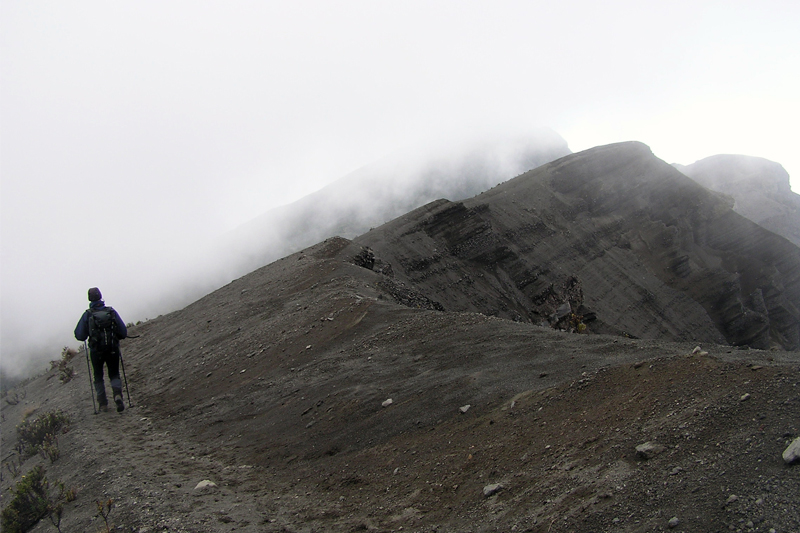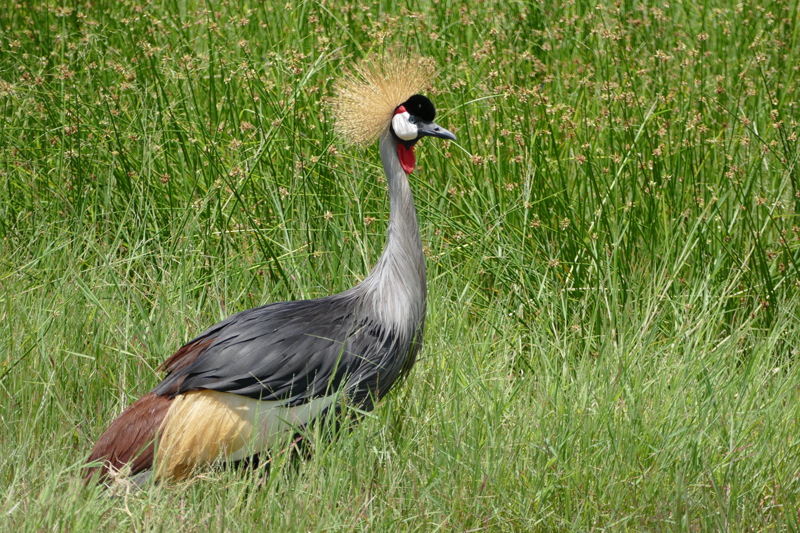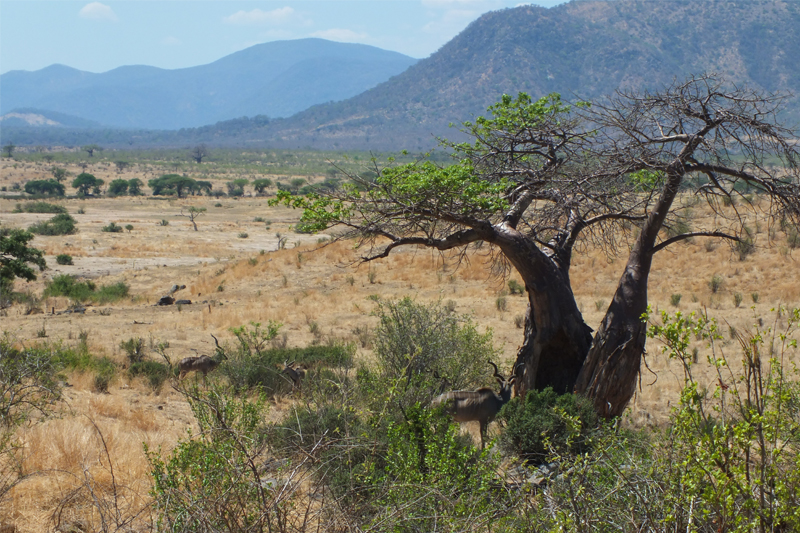Other Regions in Tanzania
Arusha National Park lies on the eastern slopes of Mount Meru, just outside Arusha.
Covering some 550 sq. kms, the diversity of habitat is bewildering – alpine desert on the summit of Meru descending through open heathland dotted with lobelia and montane forest to savannah woodland, rolling hills of grassland and the Momella lakes. In the heart of the park lies the Ngurdoto Crater, like the Ngorongoro, a collapsed caldera.
The scenic splendour of Arusha is matched by the variation in wildlife species. Of the Big 5, you’re only likely to see buffalo, but giraffe, zebra, waterbuck, dik dik, warthog and bushbuck are common, and some special species include the black & white colobus and blue monkey. The birdlife is spectacular with over 650 species recorded. Flamingo and waterfowl dominate some of the Momela lakes, and the forest is home to such splendours as the Narina trogon, scarlet-tufted sunbird, Kenrick’s and Abbott’s starling, rufous sparrow, red-throated tit and bat hawk.
It is possible to climb Mount Meru on a non-technical trekking basis. It is a steep climb and you will need 2 or 3 nights on the mountain. For more information please see our Mount Meru section on our dedicated Mountain Trekking page.



Mikumi abuts the north-western border of the vast Nyerere National Park and is cut in two by the main Dar es Salaam to Iringa road. The park, Tanzania’s fourth largest at around 3200 sq.kms, is dominated by the Mkata floodplain and is one of the best areas to see eland, the largest antelope species. Other game includes lion, elephant, Nyasa blue wildebeest, buffalo, giraffe and wild dog. Bird species number over 400. Ease of access and with a good network of roads make Mikumi a popular park to visit from Dar es Salaam, or if driving to Ruaha.
Day excursions to the remote and forested Udzungwa Mountains National Park can also be taken (there is no permanent accommodation in Udzungwa but the park does have a number of excellent walking trails). Udzungwa is an important birding area with four species endemic including the Udzungwa forest partridge only ‘discovered’ in 1991.

